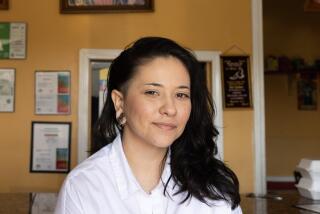A Look at New Religious Liberty in Latin America
- Share via
In assessing the impact of Pentecostalism in Latin America, Bolivian lawyer and religious liberties expert Pedro C. Moreno has painted the region as a society of paradoxes.
“It is a land of deep religiosity, but substantial official corruption. Saturated with macho types, but not enough responsible men. With a ruling class ethnically mestizo (mix of Indian and European), but, out of prejudice, considering itself white. Where the law is seldom openly challenged, but frequently disobeyed or ignored.”
Moreno argues that Pentecostal churches have brought these divided classes together in a way unfamiliar to Latin Americans. By questioning the dominant religious structures of Catholics and Protestants, Pentecostals have found a fresh way of expressing their discontent with existing society.
After almost two decades of dictatorship and military domination, Latin America is emerging as a region marked by democracy and economic growth. With the exception of Cuba, all Latin American nations have democratically elected governments. Even in Mexico, where the PRI has dominated elections for more than six decades, one-party dominance is being challenged.
An outgrowth of the political change has been a move toward greater religious freedom. The intricate details of how that change has unfolded is the topic of Paul E. Sigmund’s new book, which gathers up some of the most renowned scholars on Latin American theology to trace the origins of religious freedom and discuss issues confronting the region.
The first portion of the book offers perspectives on the evolving role of the Catholic Church and the profound effects of Protestant growth and evangelization in the area. In the second portion, authors analyze religious freedom in specific countries with chapters devoted to Cuba, El Salvador, Mexico, Nicaragua, Guatemala, Argentina, Brazil, Chile, Colombia, Peru and Venezuela.
In his introduction, Sigmund, a professor of Latin American politics at Princeton University, cites two main reasons for the new era of religious pluralism. First, with the end of the Cold War, basic principles of freedom are being challenged less often by those who have traditionally favored a more authoritarian model of church-state relations. Second, the dramatic expansion of evangelical Protestantism constitutes a strong and increasingly visible presence in Latin American society.
Even so, he keenly notes that estimates of that expansion are sometimes exaggerated. Moreover, as Sigmund points out, those who comment on the growth of Protestantism often ignore the fact that a significant number of converts later return to Catholicism or switch back and forth between the two faiths.
Moreno, in his chapter, expands on the growth of Protestant denominations. He offers sharp criticism of the internal weaknesses of Latin American Pentecostalism, most notably the tendency to assign more importance to the spirit than to the secular world.
The authors recount many historical details of religious discrimination and notable constitutional landmarks in the path toward Latin American religious freedom. Overall, however, the book attempts to accomplish too much and in the process leaves the reader feeling somewhat dissatisfied.
Because each chapter is meant to stand on its own, some passages and moments in religious history become repetitive. Other areas become bogged down in historical detail and lack more introspective analysis to put current legislation into political context.
Notable exceptions come in the book’s chapters on El Salvador and Nicaragua, in which the authors contrast the role the Catholic Church played in the two nations’ civil wars. In El Salvador, the church served as a mediator and a defender of civil rights; in Nicaragua, the church was often seen as a partisan opponent of the political left.
Although religious freedom increasingly prevails in the region, the book notes that conflict and persecution continue in some areas--notably in Guatemala, southern Mexico and Colombia. Many continue to flee their homelands in search of places where they can openly practice their own faiths.
Most of those seeking refuge find their way to the United States. By presenting information about the history of Latin America’s religious struggles, the book provides a framework to help readers understand the beliefs and practices of those immigrants as they build establish churches here.
Margaret Ramirez covers religion for The Times.
More to Read
Sign up for Essential California
The most important California stories and recommendations in your inbox every morning.
You may occasionally receive promotional content from the Los Angeles Times.













